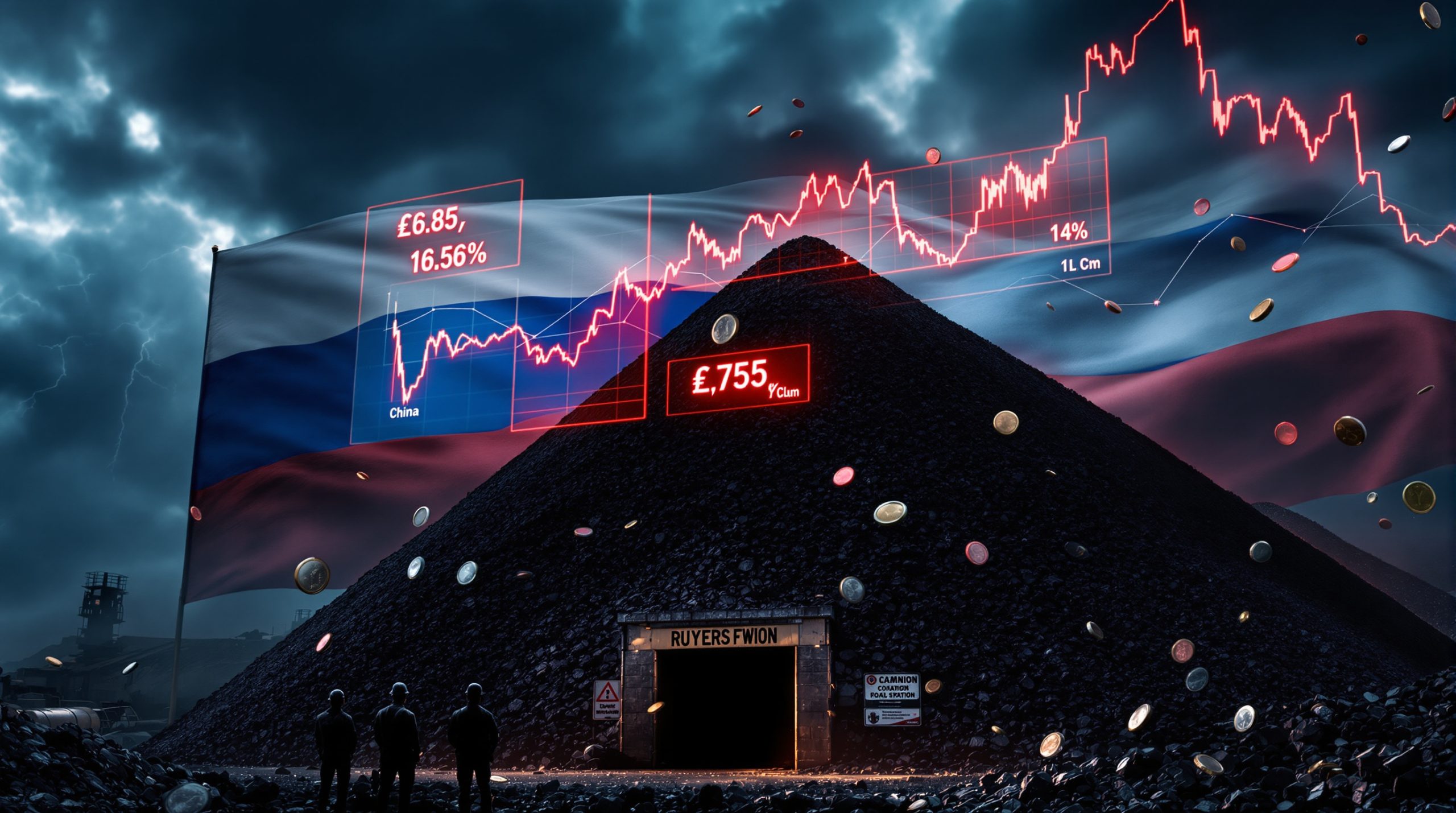What's Driving the Current Metals Market Performance?
The metals market is exhibiting mixed performance in mid-2025, with divergent trends across various metals. This complex landscape is creating a nuanced environment for investors and industry stakeholders to navigate as regional and global factors continue to influence price movements in metals market performance and nickel prices.
Key Market Indicators and Recent Movements
The Shanghai Futures Exchange (SHFE) has shown varied performance across different metals sectors, with nickel emerging as the standout performer with a significant 1.23% increase. This contrasts with declines in SHFE lead and tin, which dropped by 0.81% and 0.4% respectively.
In the ferrous sector, most metals posted gains, with iron ore futures climbing an impressive 1.8%, demonstrating continued strength in steelmaking raw materials. This upward trend extends to steel products, with hot-rolled coil gaining 1.24% and rebar increasing by 1.1%.
Precious metals have maintained their bullish momentum, with SHFE silver breaking through the psychologically important 9,000 yuan/kg threshold to reach 9,118 yuan/kg—a new record high. The corresponding rise in NYMEX silver to $38.26/oz represents the highest level since September 2011.
Polysilicon has also shown remarkable consistency, recording its eighth consecutive day of gains with a 1.94% increase. This performance signals continued strength in the solar energy supply chain despite broader market volatility.
Global Market Context and Economic Factors
The US dollar index rose 0.26% to 97.83, heading for its largest weekly gain since February. This dollar strength typically creates headwinds for dollar-denominated commodities, making the resilience of many metals prices particularly noteworthy.
"Currency movements are creating interesting arbitrage opportunities between domestic and international exchanges, with regional price differentials becoming increasingly significant for traders," notes a senior metals analyst at Shanghai Metals Market.
Labor market data from the United States has shown unexpected resilience, with jobless claims falling to a seven-week low. This development suggests stabilization in the US labor market, potentially delaying expectations for aggressive Federal Reserve easing.
Crude oil markets displayed modest gains amid Russian supply uncertainties, with US crude up 0.78% and Brent gaining 0.64%. These movements came as OPEC+ agreed to increase oil production by 548,000 barrels per day in August, a decision that ING analysts suggest could "push the global market into significant surplus in Q4."
How Are Base Metals Performing in Domestic and International Markets?
The performance divergence between domestic Chinese exchanges and international markets provides insight into regional economic conditions and offers potential arbitrage opportunities for sophisticated traders.
Domestic Base Metals Performance Analysis
In domestic markets, SHFE nickel led gains with its 1.23% increase, outperforming other base metals substantially. This strength contrasts with the weakness seen in SHFE lead and tin, which were the only base metals to decline domestically.
Other base metals on the SHFE showed minor fluctuations, suggesting a market seeking direction amid mixed economic signals. Notably, the alumina main contract fell by 2.44%, indicating potential oversupply or weakening demand in the aluminum production chain.
The aluminum casting main contract experienced a marginal decline of just 0.03%, demonstrating relative stability compared to other metals. Meanwhile, lithium carbonate futures fell slightly by 0.28%, reflecting ongoing adjustments in the battery materials sector.
International Base Metals Market Trends
On the London Metal Exchange, zinc showed resilience with a slight gain of 0.05%, while lead and tin declined by 0.86% and 0.76% respectively. These divergent performances between domestic and international markets highlight the impact of regional factors on metals pricing.
The price differentials between SHFE and LME for various metals have created notable arbitrage windows, particularly for copper and aluminum. These opportunities emerge from the interplay of local supply-demand dynamics, regional economic policies, and global macro factors.
- LME aluminum: Moderate stability with minor fluctuations
- LME copper: Showing resilience despite dollar strength
- LME nickel: Lagging behind the stronger performance seen on SHFE
- LME zinc: Slight gains bucking the downward trend of other base metals
Regional inventory levels are playing a crucial role in these price differentials, with Chinese warehouse stocks showing different patterns compared to LME-registered inventories.
Why Is Nickel Outperforming Other Base Metals?
Nickel's standout performance in current market conditions stems from a combination of supply constraints, steady demand growth, and unique market dynamics affecting this critical battery material.
Supply-Side Factors Influencing Nickel Prices
Several production constraints in major nickel-producing regions are supporting prices. Indonesia, the world's largest producer, continues to adjust its export policies, while Russia—a significant nickel supplier—faces ongoing geopolitical uncertainties that could disrupt global supply chains.
Inventory levels across major exchanges remain tight, with visible stocks at multi-year lows. This limited buffer against supply disruptions creates a market more susceptible to price volatility and upward pressure.
The NPI (Nickel Pig Iron) market is experiencing a period of price stability despite ongoing negotiations between upstream and downstream sectors. As an SMM analyst noted, "The back-and-forth negotiations in the NPI market reflect producers' attempts to maintain margins amid fluctuating ore prices."
Potential sanctions affecting Russian nickel exports remain a significant concern for market participants. Any disruption to Russian supply—which accounts for approximately 11% of global production—could trigger sharp price increases given the current tight inventory situation.
Demand Drivers for Nickel in 2025
While stainless steel futures declined by 0.82%, the sector still accounts for roughly two-thirds of global nickel consumption. The modest cooling in stainless production has been offset by growth in other application areas.
Electric vehicle battery demand continues to provide robust support for nickel consumption, particularly for high-grade nickel suitable for battery manufacturing. Despite recent innovations in LFP (Lithium Iron Phosphate) battery technology, high-nickel cathodes remain essential for long-range electric vehicles.
The nickel sulfate market has shown signs of stabilization, indicating steady demand for battery materials. This stability is particularly significant given the rapid capacity expansion in the EV battery sector across China, Europe, and North America.
"While stainless steel remains the largest consumer of nickel, the higher growth rate in battery applications is gradually reshaping market dynamics and price sensitivity," explains a battery materials specialist.
Industrial applications beyond stainless steel and batteries—including superalloys, plating, and specialty steels—maintain baseline consumption levels, providing a diversified demand foundation for nickel.
What's Happening in the Precious Metals Sector?
Precious metals are experiencing a remarkable rally, with silver in particular achieving multi-year highs across both domestic and international markets, driven by a combination of industrial demand and investment flows.
Silver's Record-Breaking Performance
NYMEX silver peaked at $38.26/oz, representing the highest level since September 2011 and marking a significant technical breakout after years of consolidation. This international strength is mirrored in Chinese markets, where SHFE silver reached a record high of 9,118 yuan/kg.
The percentage gains underscore the momentum in silver markets, with SHFE silver rising 1.74% while COMEX silver gained an even more impressive 1.88%. These parallel moves across different trading venues confirm the global nature of silver's bull market.
Technical analysis of silver's price trajectory suggests the metal has broken through long-term resistance levels, potentially opening the way for further gains. The silver-to-gold ratio has also compressed, indicating silver's outperformance relative to gold.
Silver's dual nature as both an industrial metal and a precious metal creates a unique demand profile:
- Industrial demand: Solar panels, electronics, and medical applications
- Investment demand: ETFs, physical bars and coins, and futures contracts
- Monetary aspects: Historical role as currency and perception as "poor man's gold"
This combination of demand sources makes silver particularly responsive to both economic growth prospects and monetary uncertainty.
Gold Market Dynamics
Gold has maintained its upward trajectory, with COMEX gold rising 0.63% amid persistent economic uncertainty. SHFE gold increased by a more modest 0.31%, slightly lagging its international counterpart.
The correlation between gold performance and macroeconomic indicators remains strong, with the metal responding to inflation expectations, real interest rates, and geopolitical risk factors. Despite dollar strength—typically a headwind for gold—the precious metal has demonstrated resilience.
Investment flows into gold-backed financial products continue to increase, with global ETF holdings expanding after several quarters of outflows. Central bank purchasing also remains robust, with emerging market central banks diversifying reserves away from traditional currencies.
"The precious metals rally, particularly in silver, demonstrates that investors are seeking both safe haven assets and exposure to the green energy transition, as silver benefits from both monetary concerns and industrial applications in renewable technologies."
How Are Ferrous Metals Trending?
The ferrous metals sector is demonstrating impressive strength, with most products in this category posting substantial gains. This performance reflects strong industrial demand and raw material supply dynamics.
Iron Ore and Steel Product Performance
Iron ore futures have surged 1.8%, continuing a strong upward trend supported by steady Chinese steel production and supply constraints from major producers in Australia and Brazil. This fundamental strength has translated into higher prices for finished steel products.
Hot-rolled coil (HRC) gained 1.24%, while rebar increased by 1.1%, demonstrating consistent pricing across the steel production chain. This alignment between raw material and finished product prices indicates a balanced market with healthy margins for producers.
The raw material support for ferrous metals maintains a positive outlook for the sector. Infrastructure investment and construction activity, particularly in emerging economies, continue to drive baseline demand for steel products.
Steel industry utilization rates remain high across major producing regions:
- China: Operating at approximately 87% capacity
- Europe: Stabilizing around 72% after earlier reductions
- North America: Maintaining steady production at 78% utilization
- India: Expanding capacity with 84% utilization rates
These robust utilization rates suggest producers are confident in near-term demand despite broader economic uncertainties.
Coking Coal and Coke Market Analysis
Coking coal has shown exceptional strength, rising significantly by 3.34% to lead gains in the ferrous complex. This essential steelmaking input has benefited from supply constraints and steady demand from blast furnace operators.
Coke climbed 2.81%, closely tracking its raw material input. The supply-demand balance in steelmaking raw materials remains tight, with weather disruptions affecting mining operations in key producing regions.
The impact of industrial policy on coal and coke markets cannot be underestimated. Environmental regulations continue to influence production capacity and operational practices, creating structural support for prices despite occasional demand fluctuations.
Regional variations in coking coal quality and availability create premium pricing for higher-grade materials, with metallurgical coal from Australia and Canada commanding significant premiums over lower-quality alternatives.
What Strategic Industrial Policies Are Affecting Metals Markets?
Government policies and strategic initiatives are increasingly influential in shaping the metals market landscape, with particular focus on high-technology applications and supply chain security.
State Capital Investment in Strategic Industries
China's State-owned Assets Supervision and Administration Commission (SASAC) has emphasized the acceleration of state capital concentration in strategic emerging industries. This policy directive signals increased investment in sectors requiring specialized metals and materials.
The focus on core technology breakthroughs and innovation platform construction creates demand tailwinds for several metals categories:
- Rare earths: Essential for permanent magnets in electric motors
- Battery metals: Lithium, cobalt, nickel, and manganese for energy storage
- Semiconductor materials: High-purity silicon, gallium, germanium, and indium
- Advanced alloys: Specialty metals for aerospace and defense applications
SASAC's commitment to strengthening common technology supply and basic research suggests a long-term approach to industrial development that will sustain metals demand beyond short-term economic cycles.
Regional Development Initiatives
Shanghai's Fengxian district has announced support for enterprises developing advanced-process integrated circuit materials, highlighting the localization of high-tech supply chains. The policy specifically targets 6N-level+ high-purity targets, deep UV photoresists, and auxiliary reagents.
Companies including Enthone, Tongchuang Purun, and Kangmeite were identified as beneficiaries of these support measures, indicating targeted assistance for firms in strategic materials production.
The development focus on electronic chemicals and semiconductor materials aligns with national priorities for technological self-sufficiency. These initiatives create sustained demand for high-purity metals and compounds that meet exacting specifications for advanced manufacturing.
"The concentration of state capital and policy support in strategic materials development represents a structural shift in metals demand patterns, favoring high-purity, specialized products over basic commodities," observes an industry policy analyst.
The impact on specialty metals and materials markets is already visible, with premium pricing for high-specification products and increased investment in purification and processing technologies.
What's the Outlook for Specific Metal Market Segments?
Different metal market segments face unique dynamics that require individual analysis. Supply constraints, demand patterns, and technological developments create varied outlooks across the metals complex.
Aluminum Market Conditions
High aluminum prices are currently suppressing downstream consumption, creating a potential ceiling for further price increases. This demand sensitivity reflects the significant role of aluminum in cost-sensitive consumer goods and construction applications.
Aluminum billet processing fees remain low, indicating margin pressure for intermediate producers. This compression between raw material costs and finished product prices suggests a market approaching equilibrium after earlier supply disruptions.
Aluminum scrap quotations are rising in some regions, reflecting tight supply of secondary materials and increasing recognition of recycled content value. The spread between primary and secondary aluminum prices has narrowed, encouraging greater utilization of scrap in alloy production.
The supply-demand balance for aluminum appears to be stabilizing, with production increases in China and the Middle East offsetting reductions in high-cost European smelters. Price forecasts suggest moderate stability with potential downside risks if energy costs decline significantly.
Regional Aluminum Price Trends:
| Region | Primary Aluminum | Aluminum Alloy | Billet Premium |
|---|---|---|---|
| China | Stabilizing | Slight decline | Compressed |
| Europe | Energy-sensitive | Firm | Elevated |
| USA | Premium strength | Mixed | Stable |
| Gulf | Expansion impact | Export-focused | Competitive |
Rare Earth Elements Market
Rare earth concentrate price increases are driving modest market gains across the sector. These critical materials, essential for permanent magnets and numerous high-tech applications, continue to demonstrate price resilience despite occasional volatility.
The strategic importance of rare earths in high-tech applications creates a unique market dynamic less correlated with traditional industrial cycles. Defense applications, renewable energy systems, and advanced electronics maintain baseline demand regardless of broader economic conditions.
Supply concentration remains a defining feature of rare earth markets, with China accounting for approximately 58% of global production and an even larger share of processing capacity. This market power enables significant influence over pricing and availability.
Price trends for individual rare earth elements diverge significantly based on specific applications:
- Neodymium and praseodymium: Strong demand for NdFeB magnets in EVs and wind turbines
- Dysprosium and terbium: Limited supply creates premium pricing for these heavy rare earths
- Cerium and lanthanum: More abundant and face pressure from substitution in catalytic applications
- Scandium and yttrium: Niche applications in aerospace alloys and phosphors maintain stable pricing
The future outlook for rare earth elements remains constructive, with growing applications in green technology and digitalization creating sustained demand growth.
What External Factors Are Influencing Metals Prices?
Beyond direct supply-demand fundamentals, a range of external factors significantly impact metals markets in 2025, creating both challenges and opportunities for market participants.
Currency Movements and Monetary Policy
US dollar strength, with the index rising 0.26% to 97.83, continues to affect commodity prices denominated in the currency. This relationship traditionally creates headwinds for metals during periods of dollar appreciation, though this correlation has weakened for some metals with tight fundamental supply pictures.
Central bank policies and interest rate expectations remain crucial drivers of investment flows into metals markets. The anticipated path of Federal Reserve policy, in particular, influences carrying costs for metals positions and relative attractiveness compared to interest-bearing assets.
The RMB exchange rate, set at 7.1475 yuan per US dollar, creates specific implications for Chinese producers and consumers of metals. Exchange rate movements alter the effective prices paid by importers and received by exporters, influencing production decisions and trade flows.
Currency-related trading strategies in metals markets have evolved, with sophisticated participants using options structures and multi-currency hedging approaches to manage exposure. These strategies have become increasingly important as currency volatility has increased.
Energy Market Impacts
Oil price movements directly affect production costs across the metals complex, with energy representing 20-40% of total production costs for many metals. Recent crude oil gains of 0.78% for US crude and 0.64% for Brent create incremental upward pressure on production costs.
The OPEC+ decision to increase production by 548,000 barrels per day in August could push the global oil market into surplus according to ING analysts. This potential oversupply situation might provide
Want to Profit from the Next Major Mineral Discovery?
Don't miss out on the next opportunity in the dynamic metals market—Discovery Alert's proprietary Discovery IQ model delivers real-time notifications on significant ASX mineral discoveries, instantly turning complex market data into actionable investment insights. Visit the Discovery Alert discoveries page to understand how major mineral discoveries can lead to substantial market returns and begin your 30-day free trial today.




